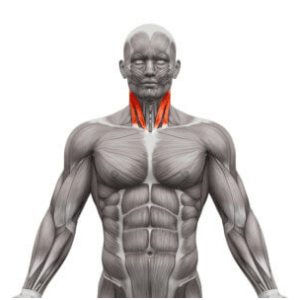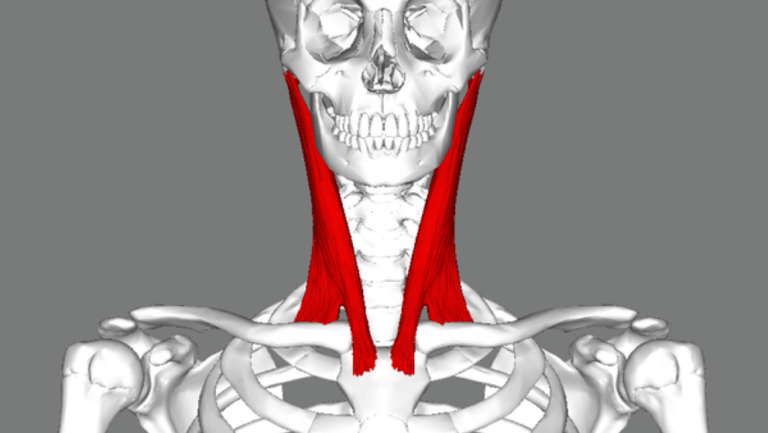The Sternocleidomastoid muscle is amongst a group of muscles that move the head and neck.

The Sternocleidomastoid muscle is the first muscle that we’re looking at in the group of muscles that move the head and neck. It is commonly abbreviated as SCM.
This muscle is quite prominent in the front and sides of the neck, especially when someone turns their head. The SCM can often be related to general head and neck pain, including migraine headaches.
What does Sternocleidomastoid muscle mean?
The name Sternocleidomastoid breaks down into root words that describe the location of the muscle.
The first part of the word, sterno, comes from the Latin word “sternon” which relates to the sternum (the breastbone).
The second part of the word, cleido, means clavicle, which is the collarbone.
The last part of the word, mastoid, comes from the Greek word “mastos” which means breast shaped. In this case it refers to a large bony protuberance just behind the ear, called the mastoid process. You could put all that together to get a muscle that attaches onto the sternum, clavicle and mastoid process.
Where do the Sternocleidomastoid muscles attach?
ORIGIN
The Sternocleidomastoid muscles originate on the manubrium of the sternum, which is a small handle-like bony area of the breastbone and on the medial clavicle (collarbone).
INSERTION
They insert on the mastoid process, which is a large bony protuberance behind the ear.
What actions do the Sternocleidomastoid muscles do?
The sternocleidomastoid muscles work bilaterally (meaning both sides together) to flex the neck.
The sternocleidomastoid muscles work unilaterally (one side at a time) to do rotation of the neck to the opposite side and lateral flexion of the neck to the same side.
However, in the case of SCM, because the muscles work independently, using one side to rotate the head in the opposite direction means that the muscle on the side that you are rotating to is getting lengthened. The same is true of lateral flexion. If I tilt my head to the right, the left side of my SCM is getting stretched. Since the sternocleidomastoid muscles on both sides work to flex the neck, extending the neck will lengthen both sides of the SCM simultaneously.
In addition to the movements initiated by the sternocleidomastoid muscles, they also serve an important function in stabilizing the neck.
Poses where the Sternocleidomastoid muscles contract:

In A Posture Such As Navasana, Just Keeping The Head And Neck In A Healthy Alignment With The Torso Will Cause The Sternocleidomastoid Muscles To Contract Isometrically To Maintain The Position Of The Head And Neck.

Whenever We Turn Our Head, Especially Against Gravity, Like We Do In Trikonasana When We Look Up To The Hand, Our Opposite Side Sternocleidomastoid Muscle Will Contract. In Other Words, If We Turn Our Head To The Left, The Right Side Of Scm Will Contract.
Poses where the Sternocleidomastoid muscles are lengthened:
There are postures that are lengthening to the front of the neck, but remember that lengthening can be part of an eccentric contraction as well.

When We Look Up In Warrior, We’Re Not Passively Dropping Our Head Back. If We Are Slowly Taking Our Head Back Then The Sternocleidomastoid Muscles Would Be Eccentrically Contracting, Allowing Our Head To Move Back With Control.
In A Posture Like Urdhva Dhanurasana, The Weight Of The Head Isn’T An Issue In The Same Way. With Our Head Hanging It Has A Tendency To Fall More Passively, Lengthening The Sternocleidomastoid Muscles. If We Draw It Back Further, The Scm Would Get Lengthened Further.

